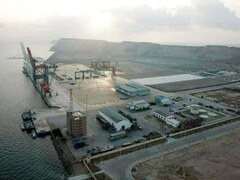ISLAMABAD: Timely adjustments in electricity tariff are critical to restore energy sector viability while maintaining a progressive structure to protect the most vulnerable households.
This was highlighted in the International Monetary Fund (IMF) document titled “First Review under Stand-By Arrangement (SBA), request for waiver on nonobservance of a performance criterion, modification of performance criteria and for rephasing of access” and reiterated the need for swift movement on broader reforms to reduce operational inefficiencies, improve performance, and reduce distortions that combine to continue to add pressure on Circular Debt flows.
The Fund appreciated caretaker government on electricity and natural gas tariff increases, saying that it demonstrated the caretaker government’s willingness to take bold steps to shore-up energy sector viability.
Need stressed for reducing cost of power production, ending uniform tariff policy
The government pledged that it would strive to reduce capacity payments as government pays arrears, either by renegotiating PPAs with a new strategy or by lengthening the duration of bank loans, depending on adequate budget space and CDMP implementation progress. And that the Circular Debt Management Plan (CDMP) would contain the CD stock to its end-FY23 level of Rs 2,310 billion (2.2 percent of GDP).
The plan includes the budgeted FY24 subsidy to the power sector of Rs 976 billion (0.9 percent of GDP), including direct support of Rs 584 billion (0.6 percent of GDP) and CD stock payments of Rs 392 billion (0.4 percent of GDP).
Key measures include: (i) continued timely alignment of tariffs with cost recovery levels to prevent further annual CD accumulation (a temporary intra-year CD stock increase is expected due to subsidy disbursement and tariff patterns) and avoid further fiscal pressures while ensuring electricity generation.
The progressive lifeline and protected slab tariff structure must be maintained to shield the vulnerable household consumers; (ii) continue timely alignment of tariffs with cost recovery levels to prevent further annual CD accumulation (a temporary intra-year CD stock increase is expected due to subsidy disbursement and tariff patterns) and avoid further fiscal pressures while ensuring electricity generation.
The progressive lifeline and protected slab tariff structure must be maintained to shield the vulnerable household consumers and; (iii) with under-recoveries projected at Rs 263 billion (0.2 percent of GDP) in FY24, sustaining the enhanced collections efforts initiated in early September to complement tariff increases.
For further progress on reforms to reduce high costs, improvement in Discos performance, and increase competition and green energy is essential. Reforms would include (i) improving price signals for inputs, notably gas; (ii) moving to private sector management of Discos through long-term concessions from 2024; (iii) renegotiating the terms of remaining power purchase agreements; (iv) continuing to convert publicly guaranteed PHPL debt into cheaper public debt; (v) expanding renewable energy capacity; and (vi) improving transmission efficiency.
Govt working towards reducing electricity cost: minister
The caretakers gave assurance to the IMF to limit energy subsidies primarily through the continued timely notification of quarterly and monthly power tariff adjustments, as determined by National Electric Power Regulatory Authority (NEPRA), the timely notification of the December 2023 semiannual gas tariff adjustment, as determined by the Oil and Gas Regulatory Authority (OGRA), and acceleration of structural cost-reducing reforms.
The caretaker government noted that the stock of power payment arrears (circular debt, CD) stood at Rs 2,537 billion (3.0 percent of GDP) in end-September 2023, an increase of Rs 227 billion (0.2 percent of GDP) since end-FY23.
The increase exceeded government’s target due to a lower than anticipated annual tariff rebasing and large Discos under-recoveries (Rs 222 billion), centered in August when the annual rebasing was implemented.
Collections dipped to 77 percent during August due to the large price shock and high average monthly consumption per household. Since then, cumulative collection improved to 84 percent at end-September and to 90 percent at end October, with the support of enhanced enforcement actions.
The IMF noted that the government shows resolve against drivers of CD flow, adding that their updated FY24 Circular Debt Management Plan (CDMP) projects zero net CD accumulation for the current fiscal year.
They continue to project the sector’s financial gap (after revenue collection) to amount to Rs 976 billion (0.9 percent of GDP). The FY24 budget subsidy of Rs 976 billion (0.9 percent of GDP) will address these urgent liquidity needs by covering: (i) outlays for the projected power tariff differential (for Discos and KE, Rs 319 billion) and other—in large parts one-off or installment—payments to provinces, tribal areas, and KE (Rs 265 billion); and (ii) CD stock payments of Rs 392 billion through PHPL principal settlements (Rs 82 billion) and payments to GPPs and IPPs (Rs 310 billion).
The NEPRA will continue with automatic notifications of regular QTAs and FCAs in line with established formulas in a timely manner, supported by efforts to spare protected slabs (as this will help both achieve cost recovery and increase the progressivity of the tariff structure for residential consumers, as intended by the 2022 residential subsidy reform). To this end cooperation between the DISCOs, Ministry of Power, and NEPRA will be further strengthened to facilitate swift petition and determination processes.
The government noted that after the residential subsidy reform in 2022, the government, with the support of the World Bank, is taking further steps in a multi-year subsidy rationalization plan that focuses on tube wells, subsidies which primarily benefit large agricultural users.
In Punjab, Sindh, and Khyber-Pakhtunkhwa provinces, the first phase of the reform will remove the government subsidy only.
For this reform, the government plans to seek approval from Cabinet and NEPRA on a concrete proposal by end-FY24, with implementation to begin in FY25Q1. The second phase will eliminate one-third of the cross-subsidy for tube wells with implementation to begin in FY26. Authorities are also exploring various options to replace agriculture tube well subsidies in Balochistan.
The Authorities also assured the Fund that they have started to accelerate various programmed structural reforms with the help of the World Bank, ADB, and other partners (supported through well-prioritized and complementary conditionality in their programs) that are aimed at reducing commercial and technical losses, improving governance and power purchase agreement (PPA) terms, increasing competition as well as reducing generation costs and greening the energy mix.
This year, the government will settle up to Rs 310 billion earmarked for IPPs and government power producers (GPPs) with revised PPA terms, using the established contract structure (10-year floating rate PIBs and 5-year Sukuks in equal parts, or a more efficient financial instrument).
The government has created fiscal space to settle the Rs 82 billion falling due in FY24 from the budget and will roll over the public guarantee for the remaining Rs 683 billion.
As the most critical part of managing the CD flow, the government is taking measures toward improving Discos’ performance, efficiency, and governance by bringing private sector participation in the form of long-term concessions arrangements (also supported by the new SOE Act and policies, as a step towards ultimate divestment or privatisation).
Towards this end, the Authorities plan initiation of work which include engagement of a transaction advisor by end-April 2024 and the development of a transaction structure, Discos selection, and way forward thereafter. Over time this reform is expected to facilitate a significant reduction in the cost of distribution.
The government’s enhanced and sustained anti-theft efforts, which have yielded Rs 46 billion from September 7 to October 31, are expected to improve collections while demonstrating a commitment to reforms in this area to potential concessionaires. The sustainability of anti-theft campaign requires the institutionalization of these recent initiatives.
The acceleration of green energy transition as per the 2021 National Electricity Policy mandates an increased share of variable and cheaper renewable energy in the generation mix. Progress toward this was recently made with the update of the IGCEP in 2022.
Copyright Business Recorder, 2024






















Comments
Comments are closed.